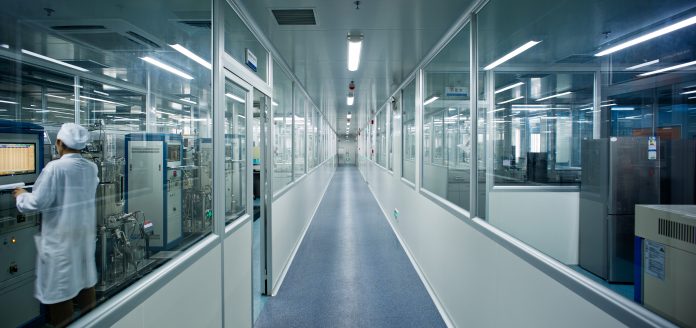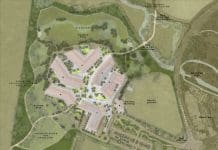David Williams, head of science & tech at property consultancy Bidwells, provides insight into the careful considerations developers and operators must take when building purpose-built laboratory space
The term ‘laboratory’ is typically associated with life sciences, yet across the Oxford-Cambridge Arc we see the term applied in many different guises across other sectors – food sciences, energy, space, deep tech, environmental and automotive engineering, to name a few.
Across the Arc, the commercial market is dominated by the region’s knowledge-intensive industries which account for 80% of all take-up.
Our own research has shown the take-up off office and laboratory space in the Oxford-Cambridge Arc remained remarkably resilient in the first half of this year, reaching 80% of its 10-year average, as the region continued leading the fight against Covid-19.
What to build and where to build
Building uses across this market span offices, manufacturing and R&D – all of which require some sort of purpose-built development or retrofitting. The challenge of what to build and where to build is helped by the grouping of different sectors into clusters at a regional, urban or campus scale.
For example, in Cambridge, life sciences and deep tech are the dominant sectors across the campuses, and in Oxford, life sciences, physical sciences, energy, space, deep tech, environmental and autonomous engineering exist in clusters across the city’s various campuses. Milton Keynes is renowned for its focus on advanced manufacturing and Fintech.
Careful thought needs to be given to the different fit-out required by firms in these various sectors, because what might be perfect for a human synthetic biology company, certainly won’t be for a company involved in space engineering.
Traditionally, specifications can be broken down into three designs: biological grade, ideal for a company trying to develop vaccines; cleanroom grade, suited to a firm doing agri-tech; and technical ‘industrial’ R&D spaces, perfect for researchers who are revolutionising personal air travel.
These can either be purpose-built or retrofitted into existing stock, which can often be very expensive.
However, as science & technology continues to take the world by storm with its explosive and infinite growth, research and development priorities are ever-evolving.
This means base builds’ designs require high levels of flexibility to accommodate different installations and changing requirements. Depending on sectors, these range from large rear access for a constant flow of deliveries, various floor load capacities to support machinery and production lines and service points.
As a result of this, three-building models have emerged: the innovation serviced offer, the ‘lab-enabled’ multi-storey office and the ‘sci warehouse’ which is capable of having upper floors retrofitted.
Challenges of building purpose-built laboratory space
Lab installation is expensive. Younger fast-growing companies, often in receipt of equity investment, need quick access to fitted space and are prepared to pay a premium for it. Their time horizon can also be relatively short, toward the next fundraise. The more mature companies can usually take a longer-term outlook where it is more cost-effective to fit out their own building and take an incentive package associated with a 5-10 year lease.
The pace of innovation in science and technology inevitably flows through to real estate, making flexibility critical. The application of AI in the pharmaceutical industry is a good example. The pandemic has forced science and technology companies to adapt their ways of working, keeping their laboratories open (with reduced occupancy levels) whilst in many cases the office function moved to home working. It is easy to see how the footprint of these companies will change, especially SMEs, and also how real estate will remain an imperative to their function and success.
The constant throughout these different designs is the importance of Place however, whether it is an urban innovation district or edge of town campus. In the 2019 YouGov/Bidwells survey of 50 UK R&D companies the top three criteria for location were ease of recruiting, data connectivity and availability of space to grow. Attracting and retaining the best people remain the top priorities.
The Bidwells’ science & technology group are facing these challenges every day, both as advisors to 23 science campuses and numerous ‘spin-out’ and large technology companies. If developers across the Arc get it right, the rewards are plentiful as the region will remain a prime market that experiences continuous rental and capital growth – especially when taking into account the government’s renewed love for R&D expenditure.
David Williams
Head of science & tech
Twitter: @bidwells
LinkedIn: Bidwells

















